
12-11-2025 09:25
 Viktorie Halasu
Viktorie Halasu
Hello, I need help with a pale terrestric Pseudom

11-11-2025 20:16
Bohan JiaHi, lastly I have found these tiny yellow decayin

09-11-2025 13:20
Hello.A tiny ascomycete, appearing as erupting gra

08-11-2025 00:29
 Francois Guay
Francois Guay
I found this species in Quebec, Canada, on herbace
Melanopsammella
Bernard Declercq,
05-11-2013 17:37
 Hello everyone,
Hello everyone,Collected on a decorticated branch of Quercus robur here in Belgium:
Ascomata superficial to slightly immersed, subglobose, 0,1-0,15 mm diam., papillate, pale brown, covered by black setae. Asci cylindrical, apex truncate, 8-spored but mostly observed with 16 part-spores, 42-47x6 µm. Spores fusiform, constricted 1-septate, soon disarticulating in part-spores; part-spores ellipsoid to wedge-shaped, smooth, hyaline, 3-3,5x1,5-2 µm. Paraphyses soon disappearing. Ectal excipulum of pale brown, small-celled textura ?epidermoidea; setae acute, base swollen, smooth, thin-walled, aseptate, blackish, 39-56x7-10 µm.
With those Hypocrea-like spores, this must be a Melanopsammella? Unfortunately, I only have documentation of species with septate hairs.
Your help is welcome.
Bernard
Hans-Otto Baral,
05-11-2013 21:19

Re : Melanopsammella
Hi Bernard
this reminds me strongly of Trichosphaerella decipiens, with apically acute, mainly unbranched setae. But what I know under that name (on Peniophora) has globose, finely warted spores.
But Ellis & Ellis (pl. 1193 in centre of plate) figure elongate spores.
Similar is Neorehmia ceratophora, with antler-like setae and also globose warted spores.
Zotto
this reminds me strongly of Trichosphaerella decipiens, with apically acute, mainly unbranched setae. But what I know under that name (on Peniophora) has globose, finely warted spores.
But Ellis & Ellis (pl. 1193 in centre of plate) figure elongate spores.
Similar is Neorehmia ceratophora, with antler-like setae and also globose warted spores.
Zotto
Enrique Rubio,
12-02-2016 17:45
Hans-Otto Baral,
12-02-2016 17:53

Re : Melanopsammella
Yes, there are similarities!
I fear that nobody will see your posting except me and Bernard?
I fear that nobody will see your posting except me and Bernard?
Enrique Rubio,
12-02-2016 18:08
Re : Melanopsammella
Yes, Zotto. I think this is not easy
Enrique Rubio,
12-02-2016 18:24
Re : Melanopsammella
Has someone this article? Samuels & M.E. Barr (1998) Notes on and additions to the Niessliaceae (Hypocreales): Can. J. Bot. 75(12): 2166 ['1997']
Maybe it could help us...
Guy Garcia,
12-02-2016 18:35
Re : Melanopsammella
Salut Enrique,
Le voilà.
Amitiés, Guy
Le voilà.
Amitiés, Guy
Enrique Rubio,
12-02-2016 18:37
Re : Melanopsammella
Merci beaucoup, Guy
Enrique Rubio,
12-02-2016 18:52
Re : Melanopsammella
After reading the manuscript I think these both fungi belong to Trichosphaerella, at least s. Samuels & Barr, but it is not T. decipiens, the only described species in the text, with disarticulating ascospores in subglobose (spiny?) part-spores. The ascospores of our fungi are somewhat smooth and wedge-shaped, more or less fitting with Ellis & Ellis plate.
Guy Garcia,
13-02-2016 07:49
Re : Melanopsammella
Voici un article récent où il est décrit un nouveau Trichosphaerella bryophile et des précisions intéressantes sur le genre.

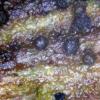
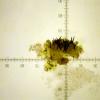
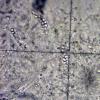
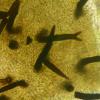
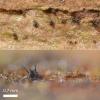
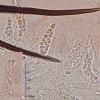

 Samuels-amp-Barr-CJB-75-2165-2176-1998-0001.pdf
Samuels-amp-Barr-CJB-75-2165-2176-1998-0001.pdf